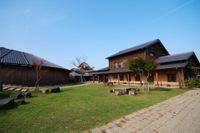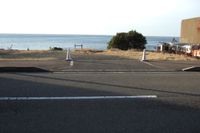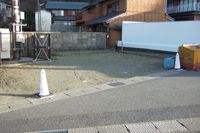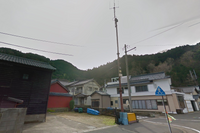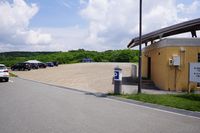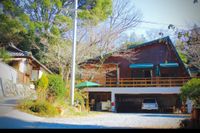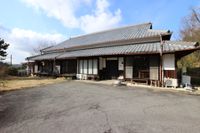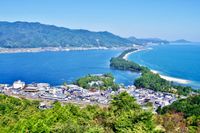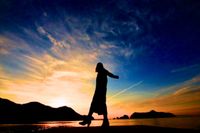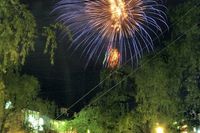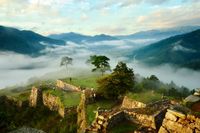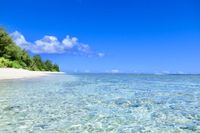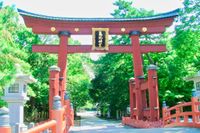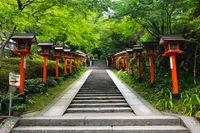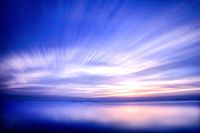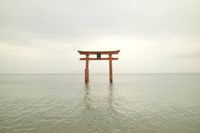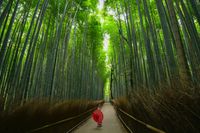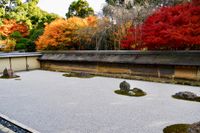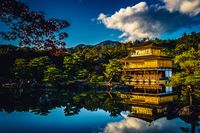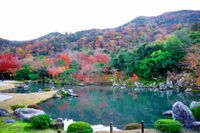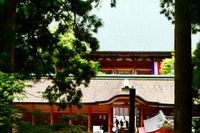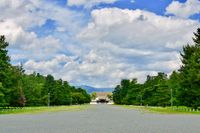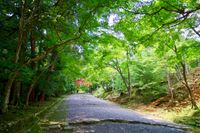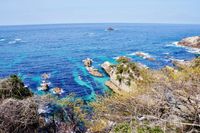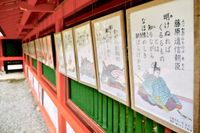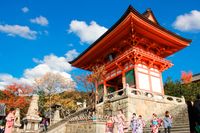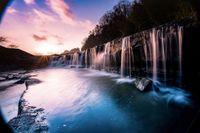Ine no Funaya Houses
京都府/与謝郡伊根町

Description
This is a type of traditional unique to the area, in Kyoto Ine Town. The building consists of a ship storeroom with living quarters above. The first floor has a ship warehouse as well as a storeroom and workship, with a living room on the second floor. It is thought that there are around 200 of these arbor shops in existence from the Edo era(1603-1868).
Homepage
Address
Nearby Car Night Spots
Nearby Activities
There is no nearby activities
Ranking Stations
Vanlife BASE | 45 min. from Narita Airport / Perfect for campervan travel/A seaside town rich in nature/Japanese countryside town/welcome traveler
¥7,000〜
/ per nightChiba Koseki, Kujukuri-machi, Sambu-gun
5.0
(61)(Bonfire BBQ) Chita Mihama Noma Beach Station
¥3,500〜
/ per nightAichi Noma, Mihamacho, Chita County
4.7
(42)Shin Meishin Suzuka PA (inbound) RV Station Suzuka * With Power!
¥2,200〜
/ per nightMie Yamamotocho, Suzuka-shi
4.3
(156)Nearby Drive Spots
Amanohashidate
This is a 3.6 km sand dune that separates Miyazu Bay and Aso Sea from north to south and is one of the three major scenic spots in Japan. Over thousands of years, around 8,000 pine trees have grown here, and creates a mysterious landscape on the eastern side with the white sand scape. It is also said that if you bend down and look between your legs, the landscape will resemble a dragon rising up to the sky.
Yuhigaura Beach
This is a bay area in the northern area of Kyoto, facing the Japan Sea. This is an ideal photo spot with its sunning sunset views. Visitors can also enjoy snorkeling in the shallow beach, for which the area is popular.
Kinosaki Onsen
This is an old hot spring in the northern part of Hyogo prefecture. The onsen opened 1300 years ago. It has been consistently been recorded as a highly ranked and regarded onsen. During the Meiji era(1868-1912), it was a place of healing for wounded soldiers during the Russo-Japanese war, and was also the setting for Shiga Naoya's "Kinosaki nite". It is a popular destination for those visiting the 7 hot springs along Otani River, and the willows trees along the river make for a magical landscape.
Takeda Castle Ruins
These are the remains of the Takeda castle built by Yamana Sozen in 1431. The castle fell during the Tanba district attack of Toyotomi Hideyoshi during the "Battle of Takeda Castle" and was destroyed completely during the battle of Sekigahara. The castle was originally built at the top of Mount Koga, and due to its geographical location and stunning views, would often be shrouded in clouds, giving it the name of the "Heaven castle" or "Japan's Machu Picchu".
Mizushima Island
This is a small uninhabited island at the tip of Tsuruga Peninsula. The area is surrounded by shallow beaches and rock formations, and due to the beauty of the clear waters, it is known as the "Hawaii of Hokuriku". The island is only accessible during the 2 month period from Mid July until the end of August.
Kehi Jingu Shrine
This is a shrine which was founded by the Empress Jingu in 199 AD. The shrine deity was enshrined by Izasawake no kami, Emperor Chuai, and Empress Jingu. Four companies named Yamato Takeru No Mikoto Emperor OjinToyotama-himeTakeshiuchi no Sukune are also enshrined here. It is an entrance from Hokuriku to Kinai, and since it is a key gateway to Korea and China, it was regarded as "Hokurikudo general guardianship" and was held in high importance. It also has one of the three largest Torii gates in Japan.
Kifune Shrine
This is the head shrine of the Kifune Shrine group, of which there are around 450 in Japan, although the construction date is unknown. The main shrine God was historically known as a rain God named "Takaokami no Kami", and worshipped as a bringer of rain and bountifulness. It is also said that drawings of horses were made on wood here, giving birth to the "Ema" which are the wooden plaques that one can see at many shrines with prayers written on them. Around 300 meters away from the main hall, one can visit "Yui Shrine", where there is another God that is said to bring destined couples together, known as Iwanagahime no Mikoto. The area is popular amongst couples.
Lake Biwa
This is a lake with the largest reservoir capacity in Shiga prefecture. It is said that the lake formed from around 4,000,000 to 6,000,000 years ago and provided a water supply to those that lived in the area from the Jomon period. The name comes from the fact that the shape of the lake resembles a Japanese musical instrument known as the Biwa.
Shirahige Shrine
This is a shrine that is said to have been built in 5 BC. The shrine God is known as Sarutahiko no Mikoto, with the red/orange Torii gates appearing to float in Lake Biwa, which is known as "Itsukushima Shrine of Omi". It is a particularly good photo spot for photographers. The Torii gates were originally on dry land, but it is said that due to the increasing water levels of the lake, the Torii gates ended up being in the lake area.
Arashiyama Bamboo Grove
This is a bamboo forest of around 400m in Sagano. This was an area opened by aristocrats and noblemen in the Heian era(794-1185), and this area loved by the upper echelons of society back then still exists today, around 1,000 years later. This symbol of Kyoto brings in many tourists. It is recommended that you visit in early morning or later evening to be able to enjoy at leisure.
Ryoanji Temple
This is a Rinzai sect temple built by Hosokawa Katsumoto in 1450. The main object of faith is Shaka Nyorai, and is registered as World Heritage Site. The famous stone water garden known as "Karesansui Garden" is said to represent a Zen landscape, and is arranged such that one cannot see all 15 stones at the same time. The area became famous when UK's Queen Elizabeth II visited here in 1975.
Kinkakuji Temple(Golden Pavilion)
This is a Rinzai sect temple built by Ashikaga Yoshimitsu in 1397. Kannon Bosatsu is the main object of worship, and is registered as a World Heritage Site. The golden Shariden temple known as "Kinkaku" in the centre of the Garden is said to represent paradise in this world. In the Kyoko-chi Pond, there are several stone islands known as Ashihara-jima islandTsurushima islandKameshima island dedicated to the feudal lords who served Ashikaga Yoshimitsu, the Shogun whose home the temple was. Along with Ginkakuji Temple(Silver Pavilion), these two temples are the great symbols of the Muromachi era(1336-1573).
Tenryu-ji Temple
This is a temple built under the instruction of Ashikaga Takauji in 1345, and is a branch temple of Rinzai Tenryu-ji sect head temple. It was built as a place of relaxation for Emperor Godaigo. The main object of worship is Shaka Nyorai, and is registered as a world heritage site. The area is also popular for autumn leaf viewing, as there are amazing views of the Arashiyama autumn leaf trees.
Mount Hiei Enryakuji Temple
This is a temple of Tendai that was founded by Saicho in 788 AD. It is also registered as a World Heritage Site. Along with Mount Koya Kongobuji Temple, it became the centre for Heian Buddhism and a place of training for figures such as Honen (founder of the Jodo sect), Shinran (founder of the Jodoshin sect), Eisai(Founder of the Rinzai sect), Dogen (founder of the Soto Sect), Nichiren (Founder of Nichiren Sect). Because of this it is also known as the "Mother Mountain of Japanese Buddhism" and sacred buddhist teachings still continue to this day.
Kyoto Imperial Palace
For 500 years between 1392 and 1869, the various generations of emperors lived here, where public ceremonies were held and administration took place. Originally, the place began as a small hall known as "Tsuchimikado Higashi no Toindono", but was expanded by Ashikaga Yoshimitsu, an important Shogun in Japanese history. It was established by Oda Nobunaga and Hideyoshi Toyotomi, to become the place as it is seen today. It ended as a place of government when the Emperor Meiji and royal family moved to Tokyo in 1869, and became open to the public from August 2016.
Hiyoshi Taisha Shrine
This is a shrine built in 91 BC. The western hall contains the main powerful God with the eastern hall contains the Mount Hiei guardian God. This is the main hub shrine of the 3,800 Hiyoshi, Hie and Sannno Shrines in Japan. There are numerous cultural items associated with monkeys, as they are considered as underlings to the shrine Gods. The area is also famous for autumn leaf viewing with around 3000 autumn leaf trees.
Uradome Beach
This is a 15km stretch of Ria type coastline along the norther Tottori prefecture area. There are various cliffs, rock and cave formations, with various sea birds inhabiting the area. It is also known as the "Matsushima of the Sanin area" as the area is said to resemble Matsushima in Miyagi prefecture. There is also a beach area which attracts visitors looking to enjoy beach and water activities.
Omi Jingu Shrine
This is a shrine built in 1940 to commemorate the 2600th year of the Emperor Jinmu, who was crowned in 660 BC. The temple God is known as Emperor Tenji, who made the trip from Asuka to Omi in 667 AD. After the Emperor Tenji wrote the Ogura Anthology of One Hundred Tanka‐poems by One Hundred Poets, it became a venue for playing Karuta (a variety of card games, normally played around new years). It is also the setting for the anime "Chihayafuru", and many fans of the anime make the pilgrimage here.
Kiyomizu-dera Temple
This is a Hosso sect temple built by Enchin in 778 AD. The temple is built is reverence to Senju Kannon(1000 Armed) and is registered as a World Heritage Site. There is also a 13 meter high famous hall known as the "Kiyomizu Stage", which was built under the instruction of Tokugawa Iemitsu, where it became the stage for performances such as Gagaku classical music, Noh theatre, Kyogen and Kabuki. The temple can be enjoyed in all four seasons with cherry blossoms, greenery, autumn leaves and snow views during the respective four seasons.
Kurotaki Falls
This is a waterfall that runs down the Mino River. With a height of 4 meters and a width of 30 meters, the waterfall has two stages, and the area is ideal for photography particularly due to the early morning glow. The area has also been a setting for various traditional folk stories and plays.※兵庫県 黒滝の朝 © Tomato_249 クリエイティブコモンズライセンス(表示4.0 国際)https://creativecommons.org/licenses/by/4.0/

